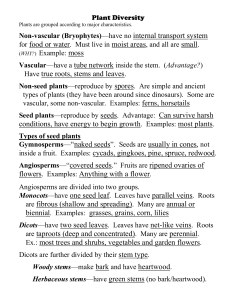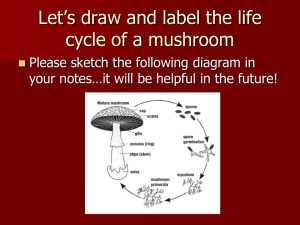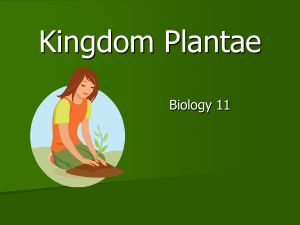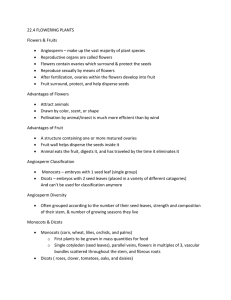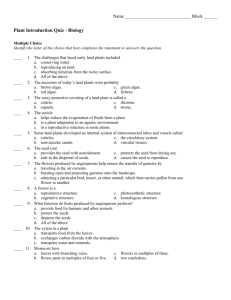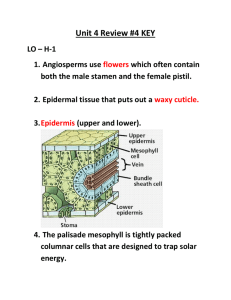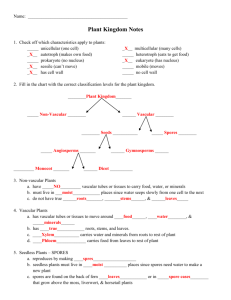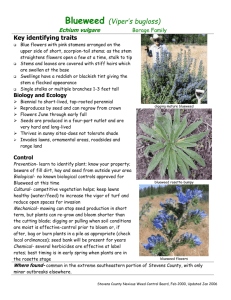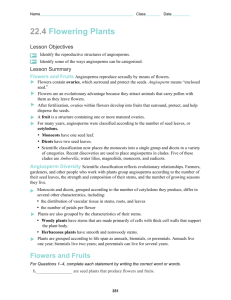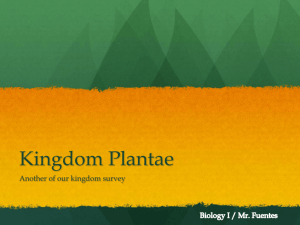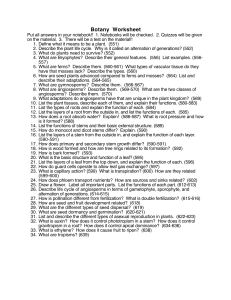Kingdom Plantae
advertisement
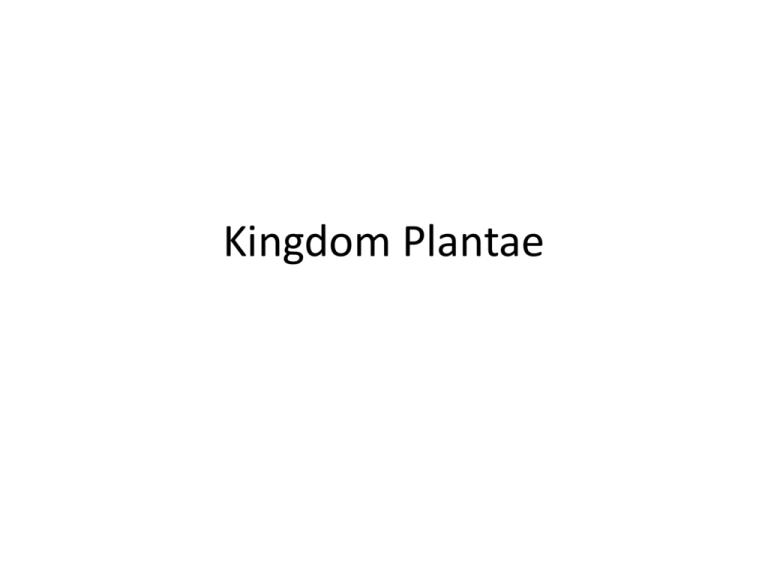
Kingdom Plantae How Plants came to be Overview of the Plant Kingdom • Botanists divide the plant kingdom into four groups based on three important features: 1. Water conducting tissues 2. Seeds 3. Flowers Mosses Ferns Cone Bearing Plant Flowering plant The Plant Life Cycle • Plants have life cycles that are characterized by alternation of generations • The two generations are the haploid (N) gametophyte, or gameteproducing plant, and the diploid (2N) sporophyte, or spore-producing plant. Bryophytes • Type of early plant with no vascular tissue that draw water in their cells by osmosis. Moss Liverwort Hornwort • In just a few million years, plants grew to a whole new scale on the landscape. Q: What caused this increase in size? A: Vascular Tissue Vascular tissue • A type of tissue that is specialized to conduct water and nutrients through the body of the plant Evolution of Vascular Tissue • Both forms of vascular tissue—xylem and phloem—can move fluids throughout the plant body, even against the force of gravity. Xylem • Carry water upwards from the roots to every part of the plant Phloem • Transports nutrients and carbohydrates produced by photosynthesis from the leaves down to the roots 22–3 Seedless Vascular Plants Club Mosses Horsetails Ferns Underground Stem • Over millions of years, plants with a single trait—the ability to form seeds—became the most dominant group of photosynthetic organisms on land. • Seed plants are divided into two groups: Gymnosperms • Cone plants • Bear their seeds directly on the surfaces of cones Ex.) conifers, pines, spruces, cycads, ancient ginkgoes and gnetophytes Angiosperms • Flowering plants • Bear their seeds within a layer of tissue that protects the seed Ex.) grasses, flowering trees shrubs, wild flowers Monocots and Dicots • Monocots and dicots are named for the number of seed leaves, or cotyledons, in the plant embryo. Monocots have one seed leaf, and dicots have two seed leafs Flowers • Seed bearing structures of angiosperms Pollen Entire Male Gamtophyte Pollen grain • Contains the male gamete Pollination • The transfer of pollen from the male gametophyte to the female gametophyte Seed Coat • Surrounds and protects the embryo and keeps the contents of the seed from drying out • Can be specialized for dispersal Flowers and Fruits • Angiosperms have unique reproductive organs known as flowers. Q: Why are flowers evolutionary adaptations? A: they attract animals that pollinate them • Flowers contain ovaries, which surround and protect the seeds • After pollination, the ovary develops into a fruit, which protects the seed and aids in its dispersal. Fruit • Ripened ovary, thick wall of tissue that surrounds the seed • Hard, tart fruit protects developing seed from herbivores • Ripe, sweet, soft fruit attracts animals to Which Plants have better adapted to live on land? • Vascular plants also evolved the ability to produce lignin, a substance that makes cell walls rigid. • The presence of lignin allows vascular plants to grow upright and tall Roots • Absorb water and minerals Leaves • Collect light for photosynthesis Veins • Made of xylem and phloem Stems • Used for support, connect roots and leaves, carry water between them Woody and Herbaceous Plants • Woody plants – Have woody stems Ex.) trees, shrubs, vines Herbaceous Plants • Plant stems that are smooth and nonwoody Ex.) dandelions, petunias, and sunflowers Annuals, Biennials, and Perennials Annuals • Angiosperms that complete a life cycle within one growing season Biennials • Angiosperms that complete their life cycle in two years • In the first year, biennials germinate and grow roots, stems, leaves • During their second year, biennials grow new stems and leaves and then produce flowers and seeds Perennials • Flowering plants that live for more than two years
